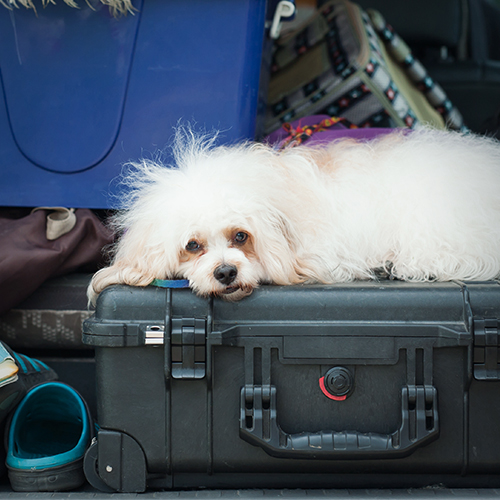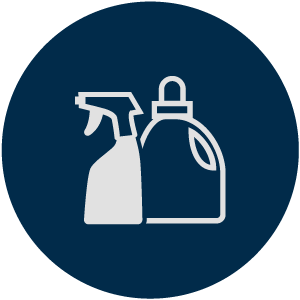
Be Prepared
Pet Preparedness
Prepare Your Pets for Disasters
Your pets are an important member of your family, so they need to be included in your family’s emergency plan. To prepare for the unexpected follow these tips with your pets in mind:
- Make a plan.
- Build an emergency kit.
- Stay informed.
 If you have a plan in place for you and your pets, you will likely encounter less difficulty, stress, and worry when you need to make a decision during an emergency. If local officials ask you to evacuate, that means your pet should evacuate too. If you leave your pets behind, they may end up lost, injured or worse.
If you have a plan in place for you and your pets, you will likely encounter less difficulty, stress, and worry when you need to make a decision during an emergency. If local officials ask you to evacuate, that means your pet should evacuate too. If you leave your pets behind, they may end up lost, injured or worse.
Things to include in your plan:
- Have an evacuation plan for your pet. Many public shelters and hotels do not allow pets inside. Know a safe place where you can take your pets before disasters and emergencies happen.
- Develop a buddy system. Plan with neighbors, friends, or relatives to make sure that someone is available to care for or evacuate your pets if you are unable to do so.
- Have your pet microchipped. Make sure to keep your address and phone number up-to-date and include contact information for an emergency contact outside of your immediate area.
- Contact your local emergency management office, animal shelter or animal control office to get additional advice and information if you’re unsure how to care for your pet in case of an emergency.
Just as you do with your family’s emergency supply kit, think first about the basics for survival, such as food and water. Have two kits, one larger kit if you are sheltering in place and one lightweight version for if you need to evacuate. Review your kits regularly to ensure that their contents, especially foods and medicines, are fresh.
Here are some items you may want to include in an emergency kit for your pet:

Food
Keep several days’ supply of food in an airtight, waterproof container.

Water
Store a water bowl and several days’ supply of water.

Medicine
Keep an extra supply of the medicine your pet takes on a regular basis in a waterproof container.

First aid kit
Talk to your veterinarian about what is most appropriate for your pet’s emergency medical needs.

Collar with ID tag and a harness or leash
Include a backup leash, collar, and ID tag. Have copies of your pet’s registration information and other relevant documents in a waterproof container and available electronically.

Traveling bag, crate, or sturdy carrier
Ideally one for each pet.

Grooming items
Pet shampoo, conditioner, and other items, in case your pet needs some cleaning up.

Sanitation needs
Include pet litter and litter box (if appropriate), newspapers, paper towels, plastic trash bags and household chlorine bleach to provide for your pet’s sanitation needs.

A picture of you and your pet together
If you become separated from your pet during an emergency, a picture of you and your pet together will help you document ownership and allow others to assist you in identifying your pet.

Familiar items
Put favorite toys, treats or bedding in your kit. Familiar items can help reduce stress for your pet.
Tips for Large Animals
If you have pets such as horses, goats, or pigs on your property, be sure to prepare before a disaster.
In addition to the tips above:
- Ensure all animals have some form of identification.
- Evacuate animals earlier, whenever possible. Map out primary and secondary routes in advance.
- Make available vehicles and trailers needed for transporting and supporting each type of animal. Also make available experienced handlers and drivers.
- Ensure destinations have food, water, veterinary care, and handling equipment.
- If evacuation is not possible, animal owners must decide whether to move large animals to a barn or turn them loose outside.
- Stay Informed of current conditions.
Here are some ways you can stay informed
- Pay attention to wireless emergency alerts (link to 3.12) for local alerts and warnings sent by state and local public safety officials.
- Listen to local officials when told to evacuate or shelter in place.
- Sign up for weather alerts from the National Weather Service, for up to five different locations anywhere in the United States and/or Download the FEMA app.
- Always bring pets indoors at the first sign or warning of a storm or disaster.